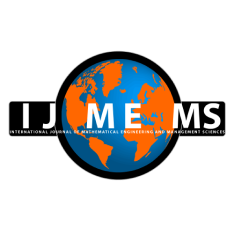Don Plackal
Department of Mechanical Engineering, Sant Longowal, Institute of Engineering and Technology, Longowal, Sangrur, Punjab, 148106, India.
Sumit Kumar
Department of Mechanical Engineering, Sant Longowal, Institute of Engineering and Technology, Longowal, Sangrur, Punjab, 148106, India.
Pardeep Gupta
Department of Mechanical Engineering, Sant Longowal, Institute of Engineering and Technology, Longowal, Sangrur, Punjab, 148106, India.
DOI https://doi.org/10.33889/IJMEMS.2021.6.5.082
Abstract
Policy deployment refers to the formulation of policies, their implementations, and reviews. Every organization irrespective of its size and sector involves the process of policy deployment. There exist many factors that affect the process of policy deployment. These factors pose flexibilities that can alter the outcome of a policy. This paper explores the flexibilities in the choice of the factors governing a policy decision. An Indian auto-spare part industry with certain policy issues is selected for theory building. A framework model for solving the policy deployment issues is formulated using an interpretive comparative technique known as situation-actor-process-learnings-actions-performance (SAP-LAP). It is based on the comparative study of contextual relationships within and among its various elements. The contextual relationship within a particular element is presented in the form of a self-interaction matrix and the contextual relationships among the elements are depicted using the cross-interaction matrix. Further, the actors and actions of the framework are ranked using an efficient interpretive ranking process (eIRP) for easy selection and prioritization. The ranks obtained through the efficient IRP model will facilitate the policymakers in the formulation of better decisions and implementation of key policies.
Keywords- Policy deployment, SAP-LAP framework, Contextual relationship, Self-interaction matrix, Cross-interaction matrix, e-IRP model.
Citation
Plackal, D., Kumar, S., & Gupta, P. (2021). Exploring the Issues in Policy Deployment Using SAP-LAP and eIRP Approaches: An Empirical Case Study. International Journal of Mathematical, Engineering and Management Sciences, 6(5), 1361-1380. https://doi.org/10.33889/IJMEMS.2021.6.5.082.



